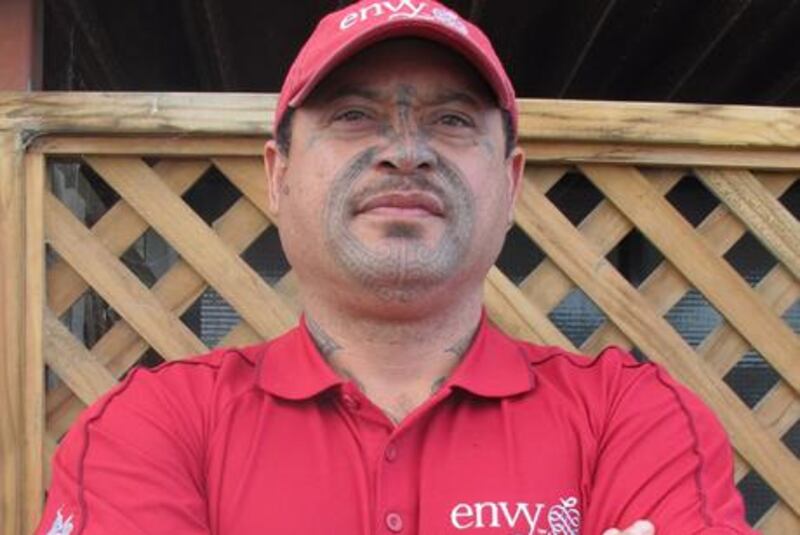AUCKLAND // With its clean, green image, and its dramatic landscapes that set the scene for the Lord of the Rings trilogy, New Zealand is popular with tourists. Few visitors, however, realise that the island country has a darker side that includes an entrenched gang culture.
The gang members are mostly Maori men, who favour powerful motorcycles, tattoos and the camaraderie of the group. They have a reputation for violence and criminal behaviour, including the manufacture and distribution of drugs; murder; assault; and gang rape.
Rarely a weekend passes without violence erupting between gangs. Two weeks ago, in the university town of Dunedin, a confrontation on Sunday between the Mongrel Mob and Black Power gangs ended with a man shot in the arm. So routine was the incident that it made only a few paragraphs in local newspapers.
Some sociologists blame the "warrior culture" of the indigenous Maori people. Others point to the poverty and unemployment that blight many Maori communities. Measures aimed at cracking down on the gangs, including a recent attempt to ban their motorcycle-style "patches" or emblems, have been largely unsuccessful.
Now, though, the gangs are trying to reform themselves, with some leaders rejecting violence and urging members to embrace mainstream values. "There's an acknowledgement that things have to change," says Edge Te Whaiti, national coordinator of the Mongrel Mob's once-feared Notorious chapter. "We all want the best for our kids."
Some government agencies are even working with gang leaders to combat social problems. Mane Adams, president of the Hastings chapter of Black Power, in the Hawkes Bay area, is employed to spread an anti-drugs message among his members. His work focuses on methamphetamine, or "crystal meth", which is a major problem in New Zealand.
There is cynicism, though, about the gangs' attempts to rebrand themselves, with critics pointing to the continuing violence. Two weeks before rugby fans converged on New Zealand for the start of the World Cup, the Mongrel Mob fired a shotgun during a Saturday afternoon rugby match in a small country town, Wairoa, north of Hastings, alarming the crowd.
Two years ago, a teenager was shot dead in Murupara, inland from Wairoa, for wearing a yellow T-shirt, the colour of a Maori gang, the Tribesmen. As in the United States, gangs here traditionally wear colours.
The Mongrel Mob, whose emblem is a bulldog, favour red, while their implacable foes, Black Power (who are unrelated to the US movement) wear blue. Their emblem is a clenched fist.
Unlike in the US, New Zealand gangs are active in rural areas. Wairoa, a town of 4,000 people, has witnessed a series of shootings.
"It's like the OK Corral around here," said one cafe owner, who declined to be named. "We've had two deaths and three disfigurements, and that's just in the past year or so."
The country's gang scene is well established. The first Hells Angels chapter outside California was founded in Auckland in 1961; over the years, dozens of other gangs - motorcycle, skinhead, LA-style "homies" - have sprung up. Not all are Maori-dominated, but many are. For young Maori facing a bleak future, the all-male gangs are like substitute families.
Many come from families scarred by drugs, alcohol and abuse. New Zealand, with a population of four million, has the highest rate of domestic violence in the developed world, and one of the worst child murder rates. Forty-one people, including 16 children, were killed in domestic violence in 2009.
The issues, described as "our dark secrets" by a former Governor-General, Dame Silvia Cartwright,- were highlighted in a film made in 1994, Once Were Warriors, set in an impoverished Auckland suburb.
Greg Newbold, a criminologist at the University of Canterbury, blames the glorification of the Maori "warrior ethos", embodied in the haka, the war dance that the All Blacks national rugby team performs before each match.
"The culture of the warrior is very powerful in the Maori psyche, and the celebration of male domination and machismo is still very evident," Mr Newbold said.
But Jim Anglem, Maori cultural adviser to the Kaumatua Te Awatea Violence Research Centre at Canterbury University, disagrees. He says that women and children were revered in traditional Maori society, and that nowadays middle-class Maori families are no more violent than their European counterparts, supporting the theory that socio-economic factors are key.
The Mongrel Mob and Black Power were founded after the mass migration of Maori to the cities after the Second World War. Rex Timu, president of the Mob's Napier chapter, in Hawkes Bay, is among those leaders mellowed by age, parenthood and prison time. Speaking over a hot chocolate in the cafeteria at the apple exporting company where he works, he says: "We want to stop the criminality and look after our families."
Mr Timu says he advises would-be recruits to "go away and get an education". He also warns them: "Don't join us if you want to do an armed robbery or kill someone. That's not our way anymore."
Greg O'Connor, president of the New Zealand Police Association, calls such statements "pure PR". Referring to the gang leaders, he says: "If they've still got a patch on their back, they're bound to the ethos of the gang." However, Mr Adams believes that 70 per cent of his members have renounced violence. "It's time for a new paradigm," he declares.
foreign.desk@tehnational.ae





